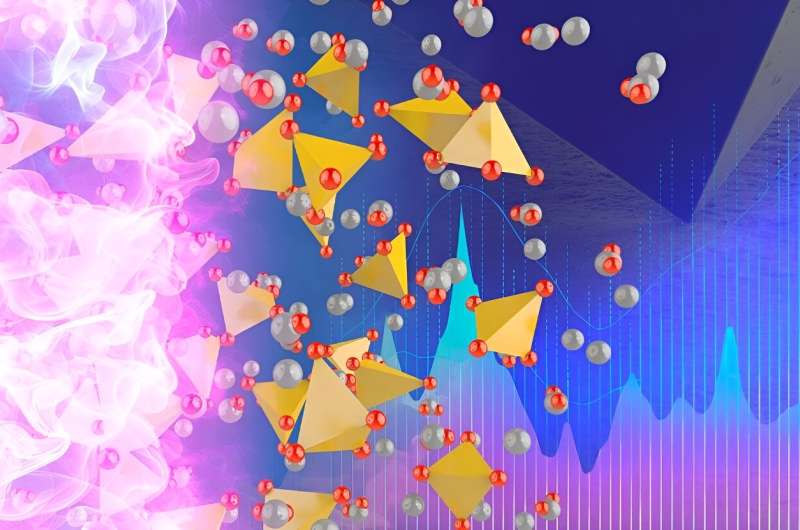This article has been reviewed according to Science X's editorial process and policies. Editors have highlighted the following attributes while ensuring the content's credibility:
fact-checked
trusted source
proofread
Scientists illuminate the mechanics of solid-state batteries

As current courses through a battery, its materials erode over time. Mechanical influences such as stress and strain affect this trajectory, although their impacts on battery efficacy and longevity are not fully understood.
A team led by researchers at the Department of Energy's Oak Ridge National Laboratory developed a framework for designing solid-state batteries, or SSBs, with mechanics in mind. Their paper, published in Science, reviewed how these factors change SSBs during their cycling.
"Our goal is to highlight the importance of mechanics in battery performance," said Sergiy Kalnaus, a scientist in ORNL's Multiphysics Modeling and Flows group. "A lot of studies have focused on chemical or electric properties but have neglected to show the underlying mechanics."
The team spans several ORNL research areas including computation, chemistry and materials science. Together, their review painted a more cohesive picture of the conditions that affect SSBs by using perspectives from across the scientific spectrum. "We're trying to bridge the divide between disciplines," said Kalnaus.
In batteries, charged particles flow through materials known as electrolytes. Most are liquids, like in the lithium-ion batteries found in electric cars—but solid electrolytes also are being developed. These conductors are typically made from glass or ceramic and could offer advantages such as enhanced safety and strength.
"True solid-state batteries don't have flammable liquids inside," said Kalnaus. "This means that they would be less hazardous than the batteries commonly used today."
However, solid electrolytes are still in the early stages of development due to the challenges associated with these novel materials. SSB components swell and shrink during charge and mass transport, which alters the system.
"Electrodes constantly deform during the battery operation, creating delamination and voids at the interfaces with the solid electrolyte," said Kalnaus. "In today's systems, the best solution is applying a large amount of pressure to keep everything together."
These dimensional changes damage solid electrolytes, which are made from brittle materials. They often break in response to strain and pressure. Making these materials more ductile would allow them to withstand stress by flowing instead of cracking. This behavior can be achieved with some techniques that introduce small crystal defects into ceramic electrolytes.
Electrons leave a system through anodes. In SSBs, this component can be made from pure lithium, which is the most energy dense metal. Although this material offers advantages for a battery's power, it also creates pressure that can damage electrolytes.
"During charging, nonuniform plating and an absence of stress-relief mechanisms can create stress concentrations. These can support large amounts of pressure, enabling the flow of lithium metal," said Erik Herbert, the leader of ORNL's Mechanical Properties and Mechanics group.
"In order to optimize the performance and longevity of SSBs, we need to engineer the next generation of anodes and solid electrolytes that can maintain mechanically stable interfaces without fracturing the solid electrolyte separator."
The team's work is part of ORNL's long history of researching materials for SSBs. In the early 1990s, a glassy electrolyte known as lithium phosphorous oxynitride, or LiPON, was developed at the lab. LiPON has become widely used as an electrolyte in thin-film batteries that have a metallic lithium anode. This component can withstand many charge-discharge cycles without failure, largely due to the ductility of LiPON. When met with mechanical stressors, it flows instead of cracking.
"In recent years we have learned that LiPON has robust mechanical properties to complement its chemical and electrochemical durability," said Nancy Dudney, an ORNL scientist who led the team that developed the material.
The team's effort highlights an under-studied aspect of SSBs—understanding the factors that shape their lifespan and efficacy. "The research community needed a road map," said Kalnaus. "In our paper, we outlined the mechanics of materials for solid-state electrolytes, encouraging scientists to consider these when designing new batteries."
More information: Sergiy Kalnaus et al, Solid-state batteries: The critical role of mechanics, Science (2023). DOI: 10.1126/science.abg5998

















